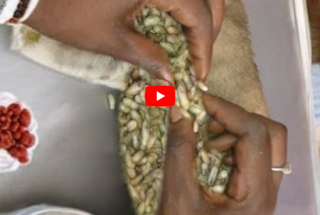
Skin problems on and around the nose can be especially painful and noticeable. Among the most common issues are nose abscesses and acne, both of which can cause swelling, redness, and tenderness. Although they may appear similar at first, an abscess is more serious than regular acne and often requires early medical attention. Understanding the difference and knowing how to manage each condition can help prevent complications and promote faster healing.
What Is a Nose Abscess?
A nose abscess is a pocket of pus that forms under the skin or inside the nasal passages. It usually occurs when bacteria—most commonly Staphylococcus aureus—invade a hair follicle, pimple, or small cut inside the nose. Because the nose is full of blood vessels that connect to deeper areas of the face, infections in this region can become serious if left untreated.
Common causes include:
- Picking or squeezing pimples inside or on the nose
- Ingrown hairs
- Minor injuries or scratches
- Untreated or severe acne in the nasal area
- Chronic nasal irritation or allergies leading to frequent rubbing
Symptoms of a nose abscess usually include:
- Sharp, throbbing pain
- Redness and swelling around the affected area
- A warm, tender lump
- Pus drainage
- Fever in more severe cases
A nose abscess should not be ignored. Because the nose lies in the “danger triangle” of the face, infections in this area can potentially spread to deeper tissues if not properly treated.
What Causes Acne on the Nose?
The nose has many oil glands, making it one of the most common areas for acne to develop. Acne on the nose is often caused by blocked pores filled with oil, bacteria, and dead skin cells. It can range from blackheads and whiteheads to deeper, painful cysts.
Triggers include:
- Excess oil production
- Hormonal changes
- Stress
- Heavy cosmetics
- Sweat and environmental pollution
- Not cleansing the skin properly
- Genetics
Unlike an abscess, acne typically develops gradually and may appear as multiple bumps, while a nose abscess is usually a single, intensely painful swelling.
Treating a Nose Abscess
Because a nose abscess involves infection, treatment focuses on controlling bacteria and reducing inflammation. Medical care may be necessary, especially if the abscess does not improve within a day or two.
1. Warm Compresses
Applying a warm compress several times a day can help the abscess come to a head and drain naturally. The warmth increases blood flow and encourages the immune system to fight the infection.
2. Topical Antibiotic Ointments
Over-the-counter antibiotic ointments may be recommended for mild cases, particularly if the infection is near the surface. These help prevent bacteria from spreading.
3. Oral Antibiotics
If the abscess is large, very painful, or accompanied by fever, a doctor may prescribe oral antibiotics. These are especially important if the infection is inside the nasal passages or if there is risk of spreading.
4. Incision and Drainage
In some cases, a healthcare provider may need to make a small incision to drain the pus. This procedure provides relief and speeds recovery, but it should never be attempted at home.
5. Avoid Squeezing or Picking
Trying to pop a nose abscess can push bacteria deeper into the skin and cause serious complications. It may also lead to scarring.
Treating Acne on the Nose
Nose acne is usually less serious than an abscess, but it can be stubborn. Effective treatment focuses on unclogging pores, reducing oil, and preventing bacteria buildup.
1. Gentle Cleansing
Wash the face twice daily with a mild cleanser. Avoid harsh scrubbing, which can irritate the skin and worsen acne.
2. Topical Acne Treatments
Ingredients that work well for nose acne include:
- Benzoyl peroxide (kills bacteria)
- Salicylic acid (unclogs pores)
- Alpha hydroxy acids (exfoliate dead skin)
- Retinoids (reduce oil and prevent clogged pores)
These products help clear existing breakouts and prevent new ones.
3. Oil-Free Skincare and Cosmetics
Choose non-comedogenic moisturizers and makeup. Products that contain heavy oils can clog pores around the nose.
4. Avoid Touching the Nose
Frequent touching transfers bacteria and oil onto the skin, making acne more likely.
5. Professional Treatments
Dermatologists may recommend:
- Chemical peels
- Laser therapy
- Prescription-strength retinoids
- Extraction of stubborn blackheads
These treatments are especially useful for persistent or cystic acne.
Prevention Tips for Both Conditions
Whether you are prone to nose abscesses or acne, good skin hygiene and healthy habits can lower your risk. Helpful tips include:
- Keep the nose clean and avoid picking at the skin
- Use clean towels and pillowcases
- Manage allergies to reduce nose rubbing
- Avoid popping pimples
- Maintain a balanced diet and stay hydrated
- Use gentle, non-comedogenic skincare products
When to Seek Medical Help
You should see a healthcare provider if:
- Pain becomes severe
- Swelling spreads around the face
- You develop fever
- The abscess doesn’t improve within 48 hours
- Acne becomes very painful or shows signs of infection
Early treatment can prevent complications and help speed recovery.



